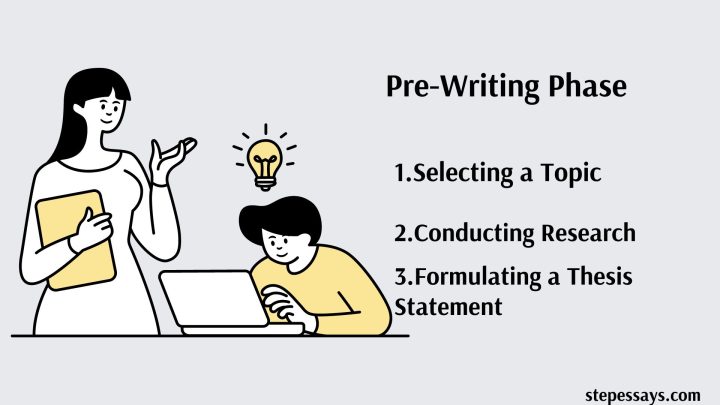Introduction:
An analysis essay is a critical examination of a subject matter, dissecting its components, and offering insightful interpretations. Whether you’re analyzing a piece of literature, a historical event, a scientific phenomenon, or a piece of artwork, the structure of your essay plays a crucial role in effectively conveying your arguments and insights. In this comprehensive guide, we will look into the steps of structuring an analysis essay paper, providing you with a roadmap to craft compelling and coherent analyses.
I. Understanding the Purpose and Audience:
Defining the Purpose
Identifying the Audience
II. Pre-Writing Phase:

Analysis Essay
- Selecting a Topic: Choose a subject matter that interests you and aligns with the objectives of your Analysis Essay. Ensure that the topic is specific enough to allow for in-depth analysis but broad enough to offer ample material for discussion.
- Conducting Research: Gather relevant sources, including scholarly articles, books, primary documents, or empirical data, to support your analysis. Evaluate the credibility and reliability of your sources to maintain academic integrity.
- Formulating a Thesis Statement: Craft a concise and arguable thesis statement that encapsulates the main argument or interpretation of your analysis. Your thesis should provide a roadmap for your readers and set the direction for your paper.
III. Structural Components of an Analysis Essay:
- Introduction:a. Hook: Begin with a compelling hook that grabs the reader’s attention and introduces the topic of analysis.b. Contextualization: Provide necessary background information to orient your readers and establish the relevance of your analysis.
c. Thesis Statement: Present your thesis statement clearly and succinctly, outlining the main argument or interpretation that your analysis will explore.
- Body Paragraphs:a. Topic Sentences: Start each paragraph with a clear topic sentence that introduces the main idea or argument to be discussed.b. Analysis and Evidence: Provide detailed analysis supported by evidence from your Analysis Essay. Interpret the significance of the evidence in relation to your thesis statement.
c. Transition Words: Use transitional phrases to ensure smooth flow between paragraphs and facilitate coherence in your analysis.
d. Counterarguments: Acknowledge opposing viewpoints or potential limitations of your analysis and address them effectively.
e. Organization: Arrange your body paragraphs logically, considering factors such as chronological order, thematic relevance, or analytical framework.
- Conclusion:a. Restate Thesis: Recapitulate your thesis statement, emphasizing its significance in light of the Analysis Essay presented.b. Summary of Key Points: Summarize the main findings and insights of your analysis, highlighting the most salient aspects.
c. Implications and Future Directions: Discuss the broader implications of your analysis and propose potential avenues for further research or exploration.
d. Closing Thought: End with a thought-provoking statement or call to action that leaves a lasting impression on your readers.
IV. Refining Your Analysis Essay:
- Revision and Editing: Review your essay for clarity, coherence, and conciseness. Ensure that each paragraph contributes to the overall argument and that your analysis is well-supported by evidence.
- Proofreading: Check for grammatical errors, punctuation mistakes, and typos. Pay attention to sentence structure and word choice to enhance the readability and professionalism of your essay.
- Peer Review: Seek feedback from peers, professors, or writing tutors to gain valuable insights and perspectives on your analysis. Consider their suggestions for improvement and revise accordingly.
V. Tips for Effective Analysis:
- Be Specific: Provide concrete examples and details to support your Analysis Essay and avoid vague or ambiguous statements.
- Use Critical Thinking: Engage in critical Analysis Essay by questioning assumptions, evaluating evidence, and considering alternative interpretations.
- Stay Focused: Maintain focus on the central theme or argument of your analysis and avoid tangential discussions that detract from your main point.
- Be Objective: Strive for objectivity in your analysis by presenting evidence impartially and avoiding personal bias or subjective judgments.
- Practice Cohesion: Ensure coherence and cohesion in your analysis by establishing clear connections between ideas and maintaining a consistent argumentative stance.
Conclusion
Structuring an analysis essay paper requires careful planning, organization, and attention to detail. By following the guidelines outlined in this guide, you can create a well-structured and persuasive analysis essay that effectively communicates your ideas and insights to the reader. Remember to start with a clear understanding of the prompt, craft a compelling introduction, develop coherent body paragraphs with strong evidence and Analysis Essay , and conclude with a concise summary of your main points. With practice and refinement, you can master the art of structuring analysis essays and become a more confident and proficient writer.
